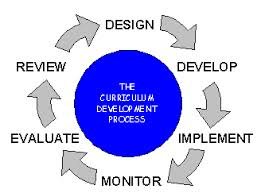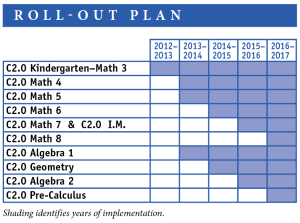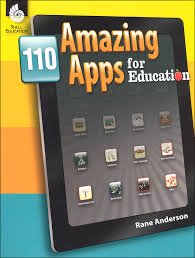K-12 Courses and Supplements
Overview
There are two types of curriculum. Core or what is commonly called “basal,” curriculum and “supplemental” curriculum (See: K-12 Curriculum and Supplements). i.pel K-12 courses will include  integrated digital curriculum and supplements for elementary, middle, and high school grades. All curriculums will contain interactive supplements, testing, teacher and student assessments and teacher course training.
integrated digital curriculum and supplements for elementary, middle, and high school grades. All curriculums will contain interactive supplements, testing, teacher and student assessments and teacher course training.
These progressive curricula and connected technology elements will be aligned to standards, may be personalized, generally allow searching for specific topics by level of difficulty and meet curriculum requirements such as scope and sequence, as well as appropriate reading level. As the new rigorous standards enter all classrooms i.pel curriculum is designed to help align standards between schools.
Curriculum Development Cycle
i.pel curriculum development structure starts with the delineation of the philosophy, goals, objectives, student competencies, learning experiences, instructional strategies, resources and assessments of each educational program (see K-12 Curriculum – Curriculum Development Cycle). It articulates what students should know and be able to do and supports teachers in knowing how to achieve these goals.
 As a multi-step, ongoing and cyclical process i.pel curriculum development progresses from evaluating an existing program, to designing an improved program, to implementing the new program and back to evaluating the revised program. This process is carried out in a planned and systematic manner.
As a multi-step, ongoing and cyclical process i.pel curriculum development progresses from evaluating an existing program, to designing an improved program, to implementing the new program and back to evaluating the revised program. This process is carried out in a planned and systematic manner.
i.pel uses the Graded Structure that organizes objectives by the grade in which students are enrolled. This structure, most commonly used for middle or high school courses, uses a unit organization format which groups objectives by main topics that may or may not be of differing difficulty. This method of grade-level and course objectives assure smooth transitions and curricular coordination among levels, particularly between elementary schools and middle schools, and between middle schools and high schools.
An organizational structural asks essential questions that centers the curriculum on understandings. This method develops assessments and determines criteria of acceptable performance.
i.pel’s curriculum development cycle process is organized by a master schedule which allows for systematic research, evaluations, revisions, implementation and refinement. Each curriculum or supplement program is one to three-year program review cycle, which allows for student and staff introduction of new materials as well as long-range budgetary planning and funding.
Years 1 and 2 may be combined, depending on the amount of writing and revisions that must be done. Year 3 is used for refinement, documentation and evaluation include the continuing development of appropriate teacher instructional strategies and activities. Most of i.pel’s evaluation and revision work will be done at the beginning of each cycle or within two years of implementation. Primary curriculum evaluators are teachers, administrators, and K-12 curriculum directors.
Curriculum Focus
i.pel will develop courses and supplements in Pre-K through K-12 in Math, Science, English, World Languages, History, Social Studies, Technology, Health, Physical Education, Music and Art. In addition special courses are being developed in computer technology training and basic psychology for middle schoolers.
addition special courses are being developed in computer technology training and basic psychology for middle schoolers.
K-8 programs will focus on core subjects including math, science, language arts, history, art, music, and world languages. The lessons in K-3 will take place both on and off-line using tablets, textbooks, printed materials, and hands-on activities. K9-12 programs will offer students more elective course choices. Remedial, Honors, Credit Recovery and Advanced Placement options will be able to be taken in addition to core courses.
i.pel curriculum will contain lessons about key questions that affect students’ daily lives including lessons in practical, creative and cautious participation in the World Wide Web. With i.pel curriculum students will be preparing for the future.
Supplements
As comprehensive core curricula move from print to digital, many supplemental materials including games are embedded as components. Short-form supplements are being used more frequently in curriculum, but they can be difficult for teachers to find and apply to fast moving classroom situations. The most successful efforts to bring supplements into schools have combined supplements with other learning objects into collections (see K-12 Curriculum – Collections of Short-Form Supplement Collections).
The most commonly used form of education entertainment is the educational video game. Other forms of educational entertainment include music, lyrics (poems), dance (movement) episodic elements (serials), dramatic enactments (scene plays) and graphic novels (comic books). Each educational entertainment element is used for the various student learning styles (see Blended-based Learning) including spatial, kinesthetic and musical learning.
Most educational entertainment elements are in short-form supplement formats (about 10 minute in length) so they can fit into the 40 minute classroom period. The long-form elements (about 30 minutes in length) are developed mostly as homework supplements or drama club enactments because they can’t conform to a traditional classroom session.

Recent Comments